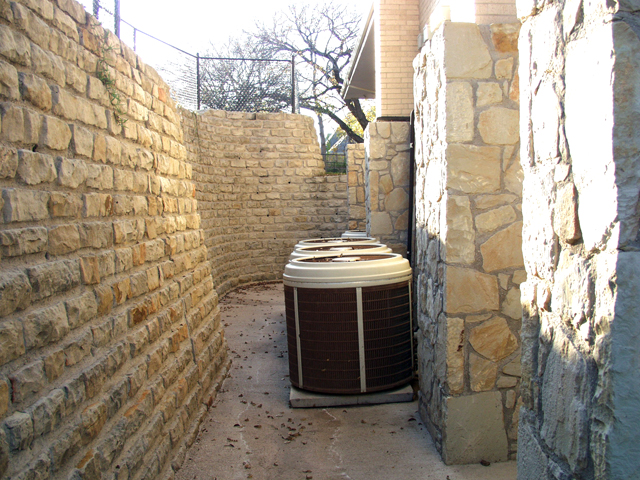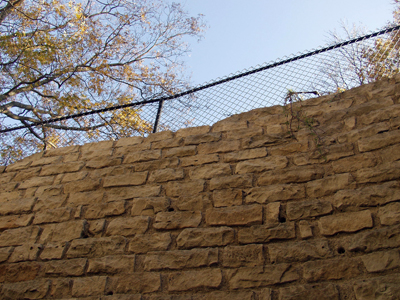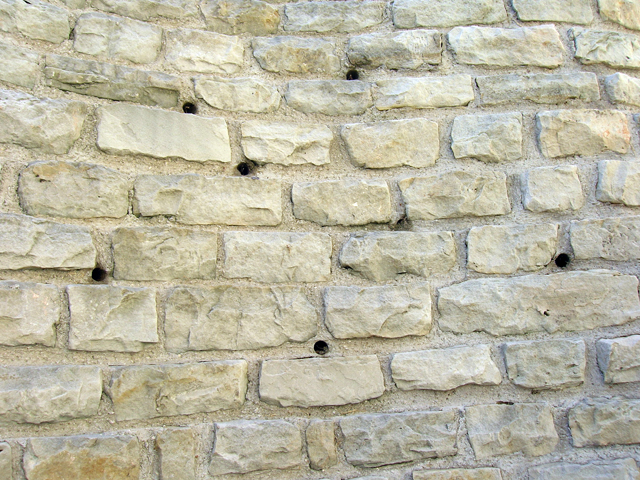
Ground Water Control
The property has hills and valleys and also slopes from south to north with an overall drop in elevation of approximately thirty feet. (See the topographical survey using the button on the left of this page.)
Somewhere along the thirty foot drop needs to be a flat area for the improvements. The most logical location was to use the rear of the sports center (now to be torn down), which would put the rear of the sports center well below the natural grade of the land. The white circle in the picture below shows the natural grade of the land abutting against the rear of the sorts center

To accomplish this, a waterproofed concrete wall was used for then entire 100 foot long back wall of the sports center. This approach worked for many years until heavy rains raised the water table. The pressure of the groundwater against the rear of the sports center was more than it could sustain. A solution was implemented during the summer and spring of 2000.
A four foot wide area was excavated, behind the sports center down to a depth below the footing of the sports center foundation. This changed the rear of the sports center from below grade to being above grade. French drains and drain cleanouts were installed at the bottom prior to the concrete pour. A commercial quality stone faced retaining wall with concrete footings was built on the back side of the excavated area
 New excavated drainage and walkway to handle groundwater. Rear of sports center is on the right. New stone faced retaining wall on the left contains the weep holes shown below. The bottom of the chain link fence on top of retaining wall was the natural grade level prior to excavation. |
The French drains are below the concrete bottom. As dictated by the slope of the land, part of the collected water is routed underground to Stonebriar Creek and part to the smaller creek which meanders through the property.
|
|
|
Weep holes are peppered throughout the retaining wall so that groundwater would has an easy means of escape as opposed to building up pressure on the wall.
 From a distance, weep holes cannot be seen |
 With a closer view the weep holes can easily be seen. If either the water table rises or heavy rain soaks the ground, the weep holes provide an easy means for the excess water to drain into the drainage valley. |